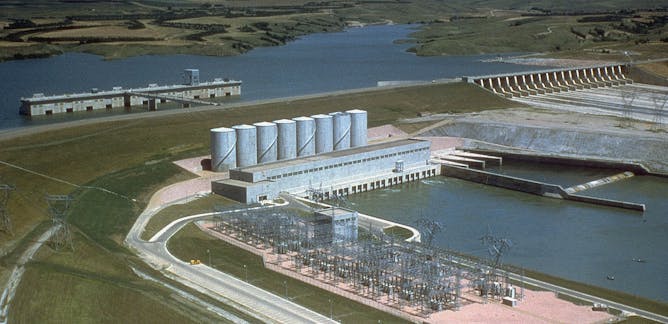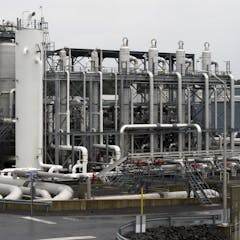
Articles on US energy policy
Displaying 1 - 20 of 108 articles

The Federal Energy Regulatory Commission recently ruled that it won’t approve energy projects on Native lands without tribal consent. But many more applications are pending.

The US Department of Energy will review its process for approving new LNG projects.

The US, a minor liquefied natural gas supplier a decade ago, now is the world’s top source. That’s good for energy security, but bad for Earth’s climate. An energy scholar explains the trade-offs.

A recent study focusing on how offshore wind farms in Massachusetts waters could affect endangered right whales does not call for slowing the projects, but says monitoring will be critical.

Russia tried to weaponize energy to keep European nations from opposing its war in Ukraine, but the real pain from Putin’s actions and Western sanctions has been felt far from Europe.

Only 13% of US solar industry jobs are currently in manufacturing. The Biden administration hopes the sector will grow fast, but that might not be so simple.

Allowing the sale of gasoline that’s 15% ethanol year-round won’t have much impact on gas prices, but recent research shows that growing corn for fuel affects the climate – for the worse.

Many people want to know about practical suggestions to help slow climate change. Effective action starts at home.

Bidirectional charging is the next big stage for electric vehicles. But storing power in your car and sending it back to your house involves more than flipping a switch.

Russia isn’t a major producer of uranium, but it handles a large share of the steps that turn it into nuclear fuel. That makes it a major player in this globalized industry.

Oil revenues are crucial to Russia’s economy. The US only accounts for a small fraction of them, so banning Russian oil imports has mainly symbolic value.

The US has required motor fuels to contain 10% biofuels since 2005. As this program nears a key milestone in 2022, farm advocates want to expand it while critics want to pare it back or repeal it.

President Biden’s proposed solar power expansion would cost $350 billion in federal support over the coming decade. An energy expert explains where that money would come from and who it would help.

A decade ago, solar power was a tiny sliver of the US energy supply. Today it’s expanding rapidly – and the Biden administration wants to make it much, much bigger.

The US is generating more electricity than ever from wind and solar power – but often it’s not needed at the time it’s produced. Advanced energy storage technologies make that power available 24/7.

Fifteen years ago electric power generation was the largest source of US greenhouse gas emissions. Now the power sector is leading the shift to a clean energy economy.

Solar power doesn’t have to be just for the wealthy anymore. With the right kind of financial incentives, households at all income levels can benefit from affordable clean energy.

Joe Biden has sweeping plans for a clean energy revolution. Congress will be a big speed bump, but it can’t block everything.

The Trump administration is opening the Arctic National Wildlife Refuge to oil and gas leasing – a step that’s as much about politics as it is about energy.

Flaring, or burning, waste gas from energy production has sharply increased over the past decade. It wastes usable fuel, pollutes the air, and helps drive climate change.
